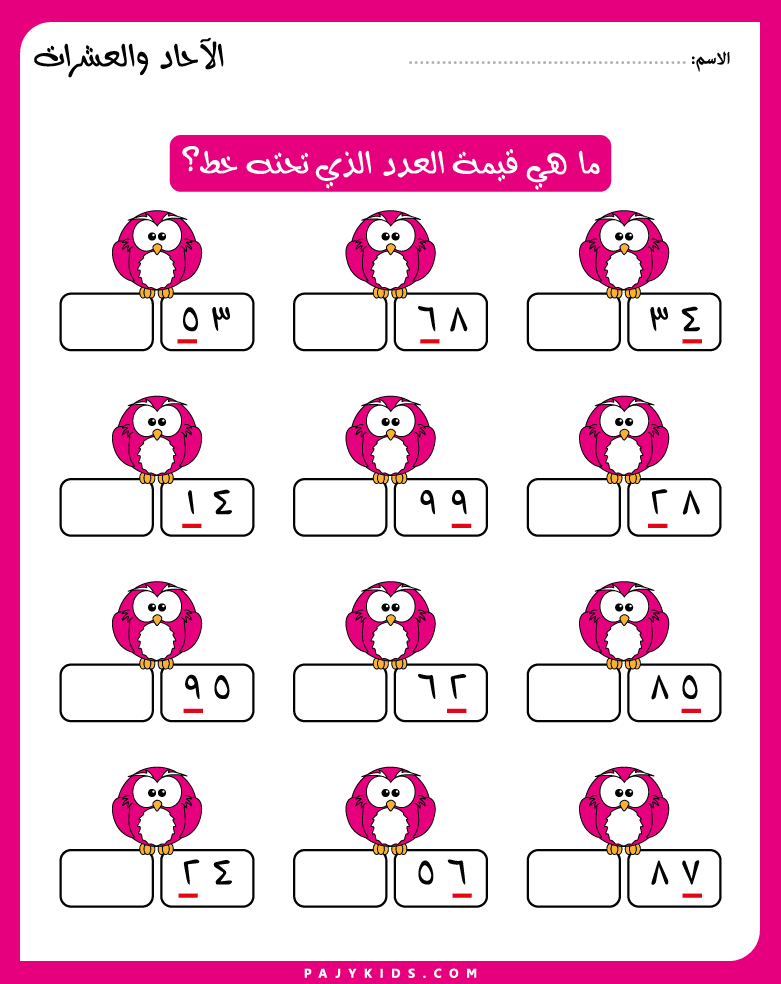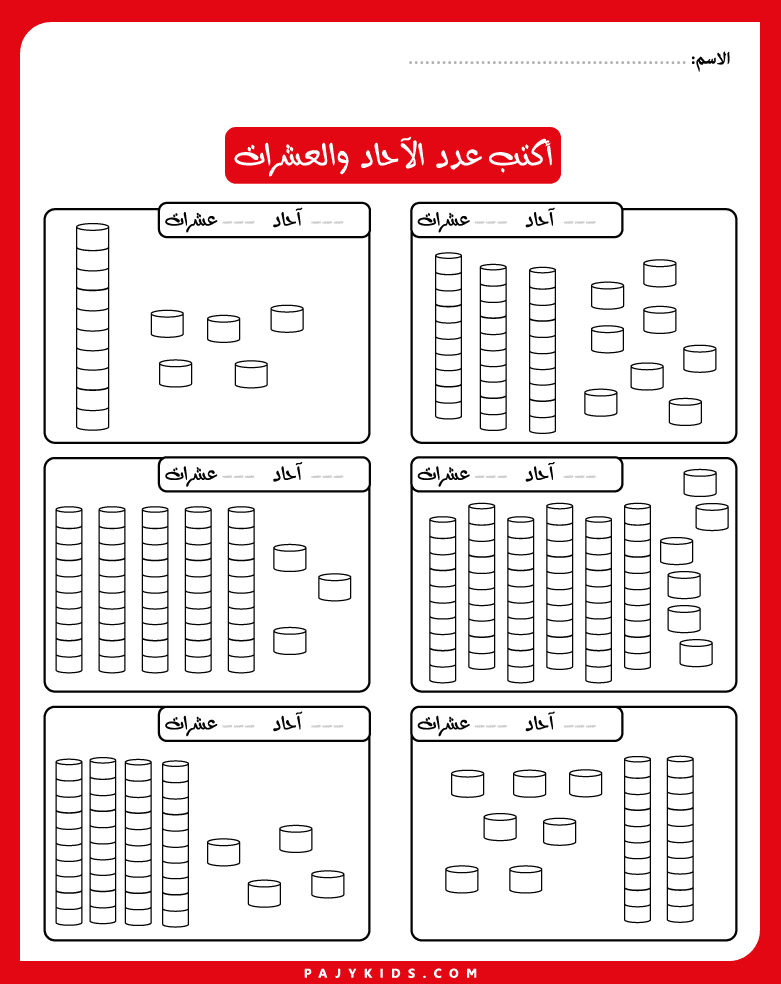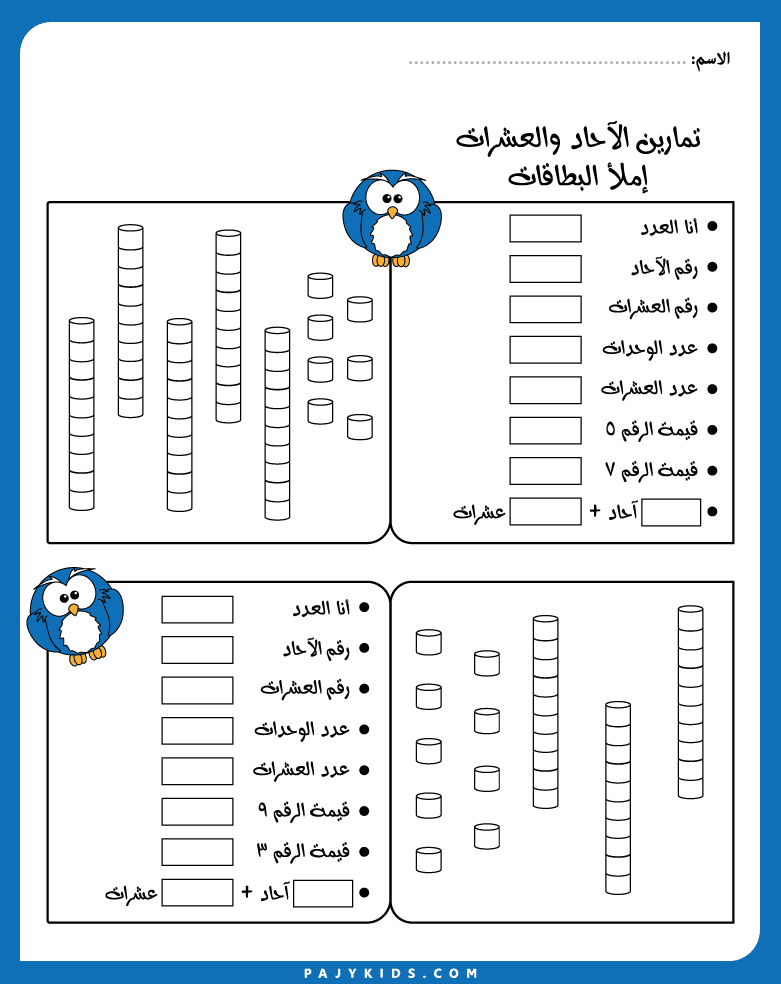Set of worksheets designed to teach children the concept of Ones and Tens for Kids Arabic Numbers. These activities include various exercises to help children understand place value by identifying the value of an underlined digit, determining the number of units and tens, and writing down the ones and tens based on a visual representation. These worksheets provide an effective and visual way to build a strong mathematical foundation for children.
Ones and Tens for Kids Arabic Numbers: Interactive Exercises to Enhance Understanding
Exercises aimed at teaching children how to identify the value of an underlined digit in a two-digit number. Each exercise features a cute owl holding a board with the number, while the child is asked to write the value on the empty board. These exercises are an attractive and simple way to introduce Ones and Tens for Kids Arabic Numbers, helping them understand that a digit’s value changes based on its position in the number.

Ones and Tens Exercises Using Blocks
The second activity focuses on teaching children the concept of place value using visual aids like blocks. Children see columns of blocks representing tens and individual blocks representing ones. In this exercise, children are asked to determine the number of ones and tens, as well as write the total number represented by the blocks. They are also asked to identify the place value of a specific digit, such as the value of the digit 9 or 3. This activity reinforces children’s understanding of Ones and Tens for Kids Arabic Numbers by connecting the numbers to a visual representation.
Engaging Arabic Number Flashcards from 1 to 10

Identifying Ones and Tens Through Visual Representation
The third activity displays other exercises that use a visual representation to help children understand two-digit numbers. In this activity, columns of ten blocks represent the tens, and single blocks represent the ones. The child is asked to write the number of ones and tens in the designated spaces. This type of exercise is an effective method for solidifying the concept of Ones and Tens for Kids Arabic Numbers in a practical way, as the child can physically see how larger numbers are composed of units and tens.
